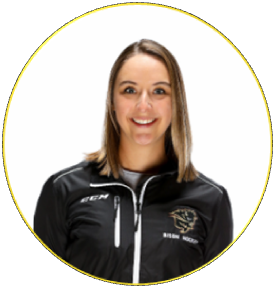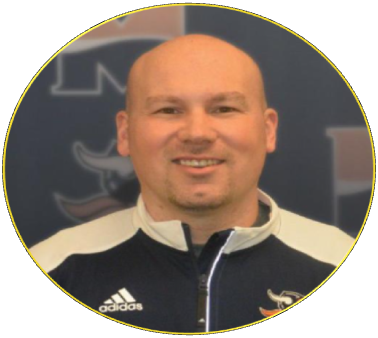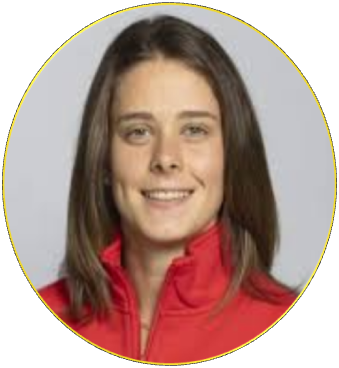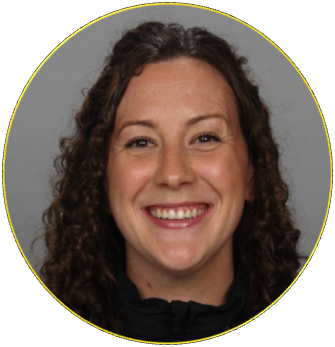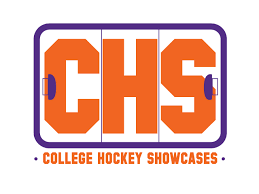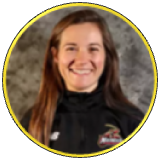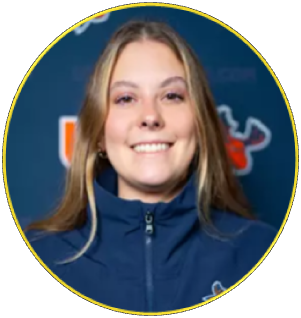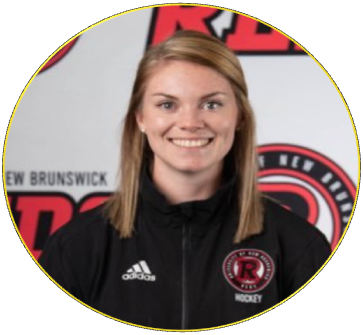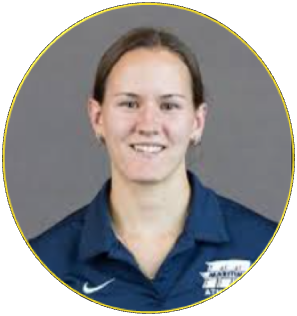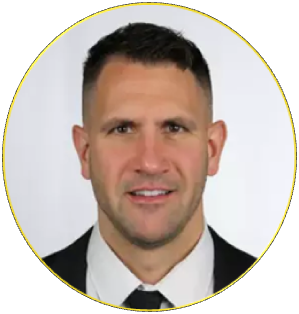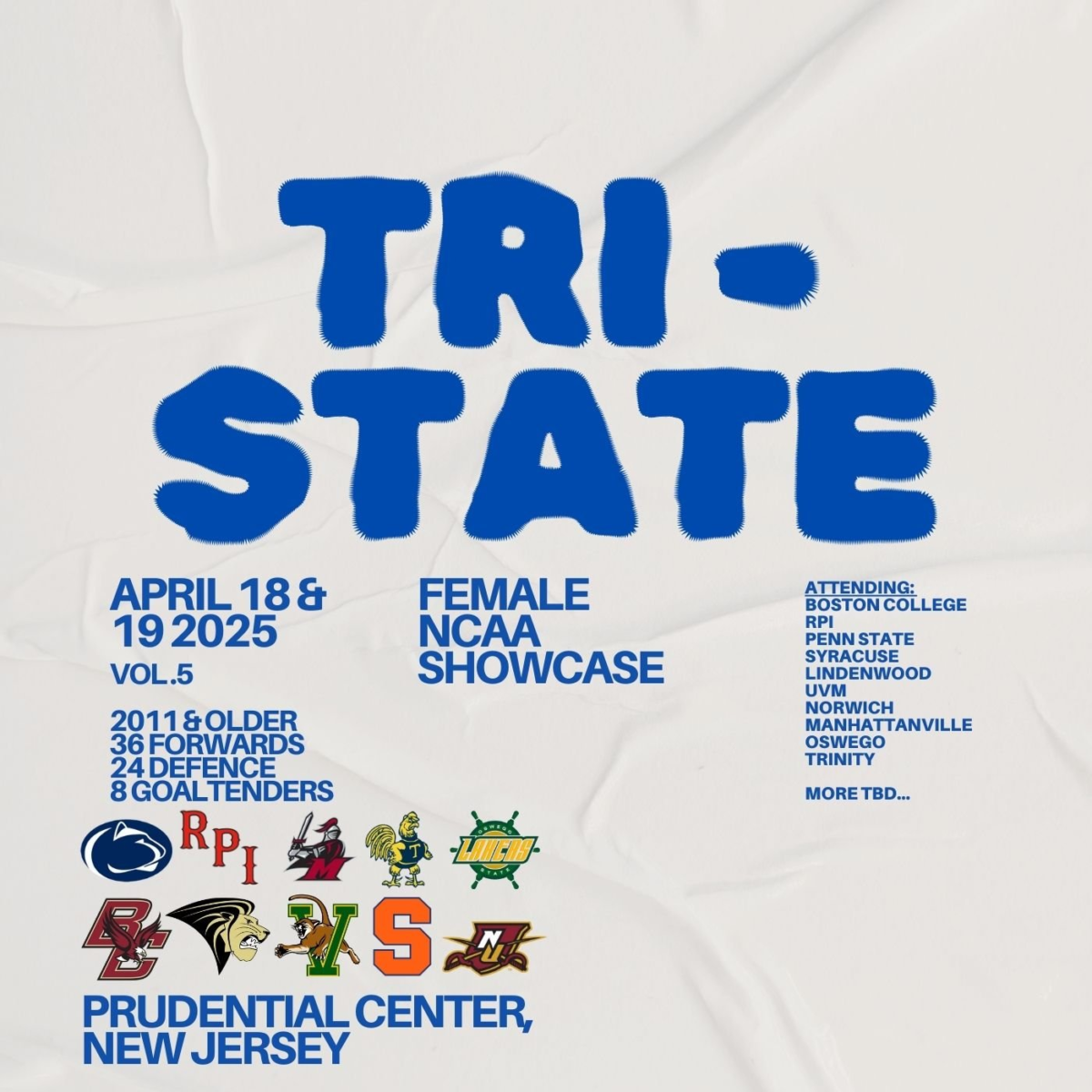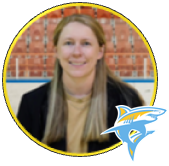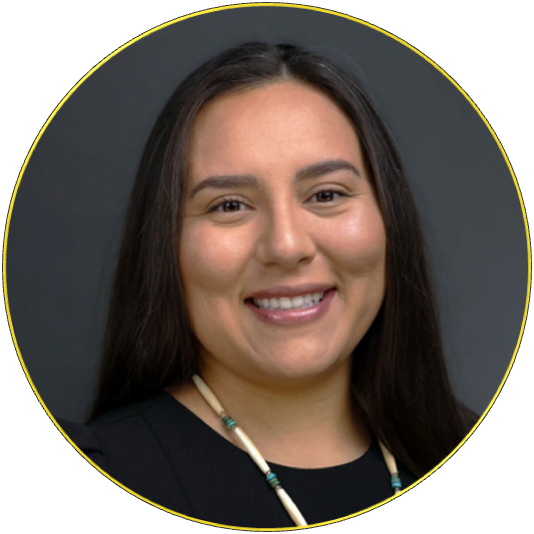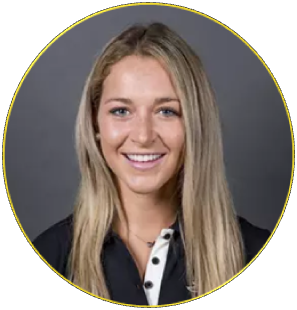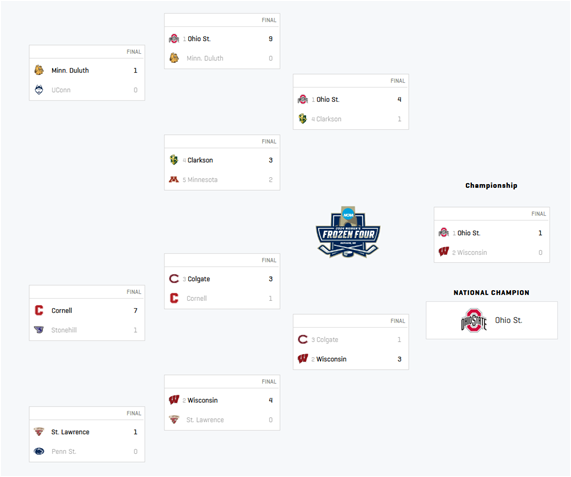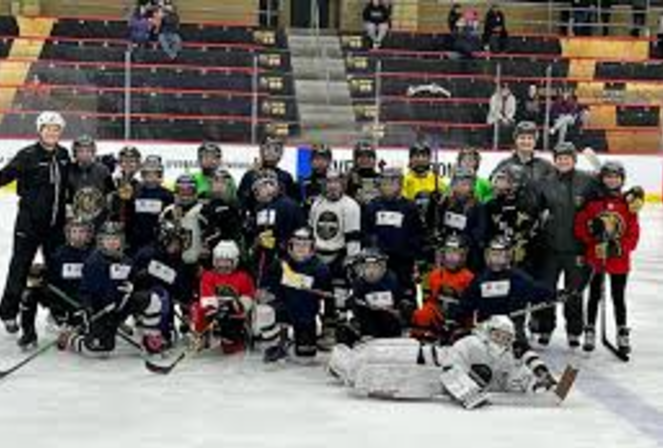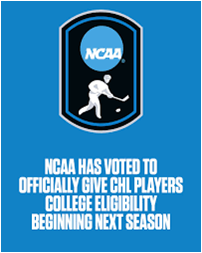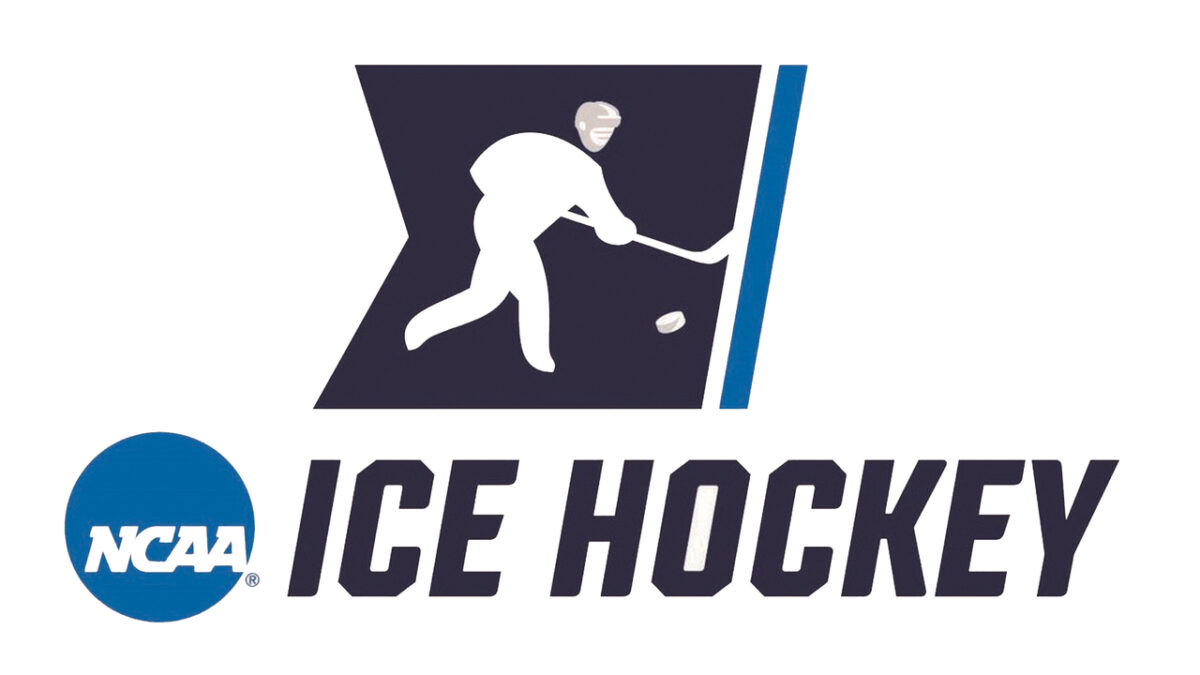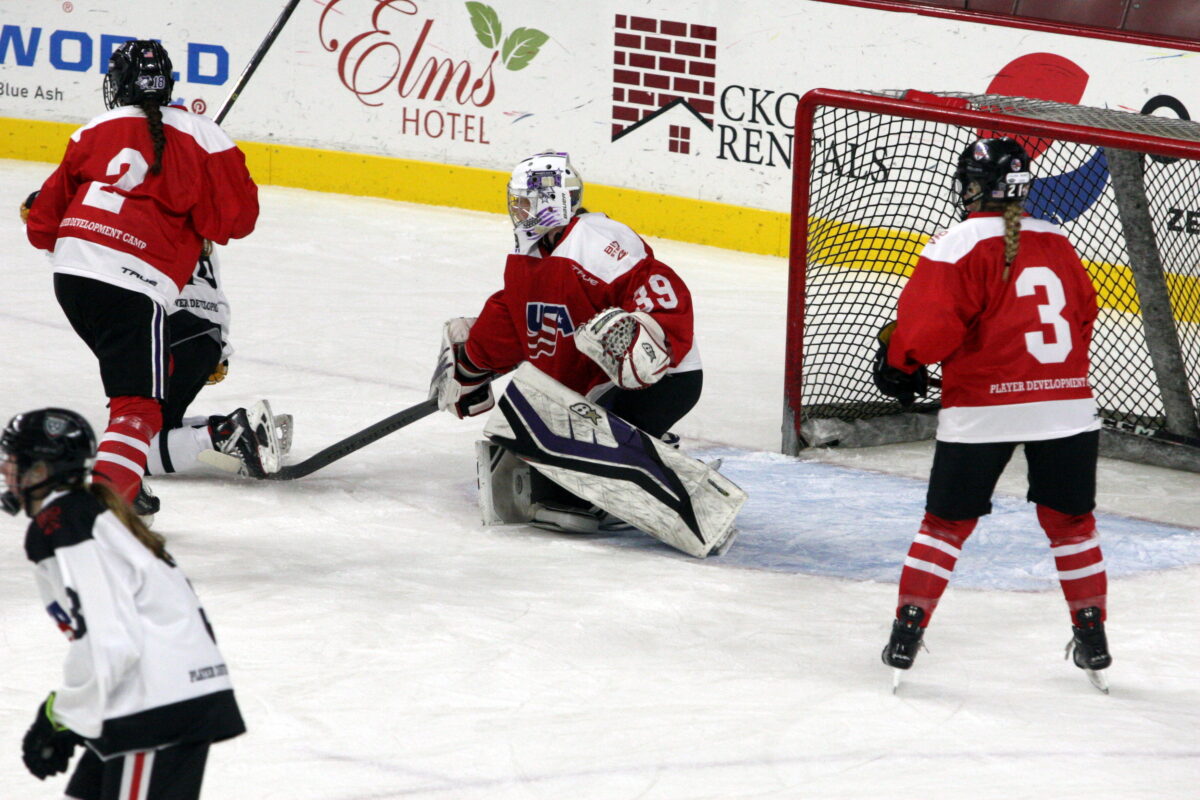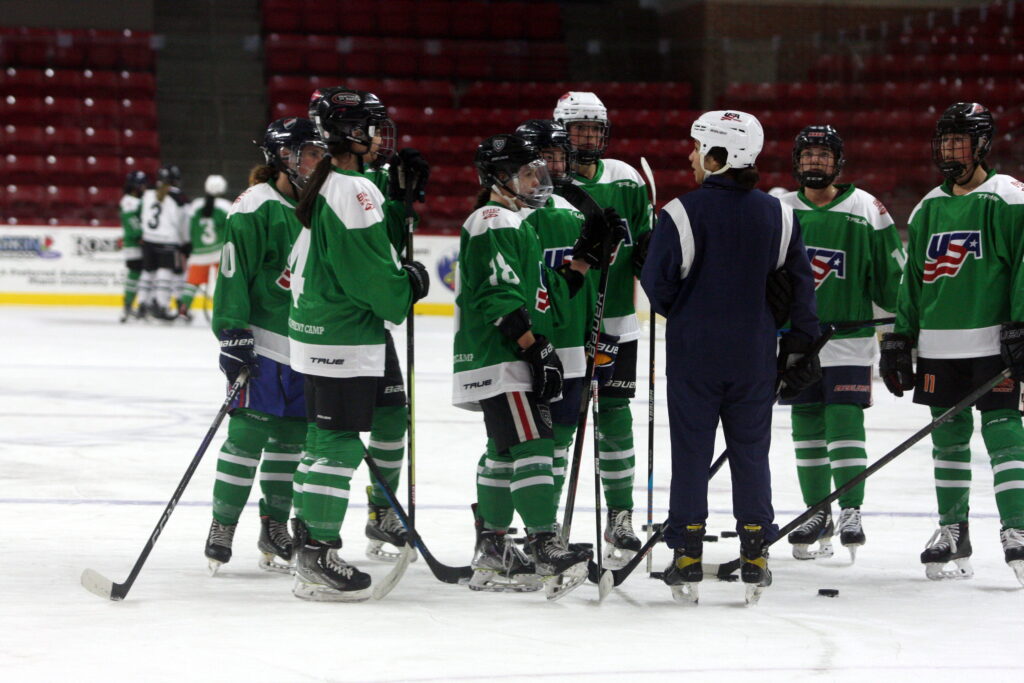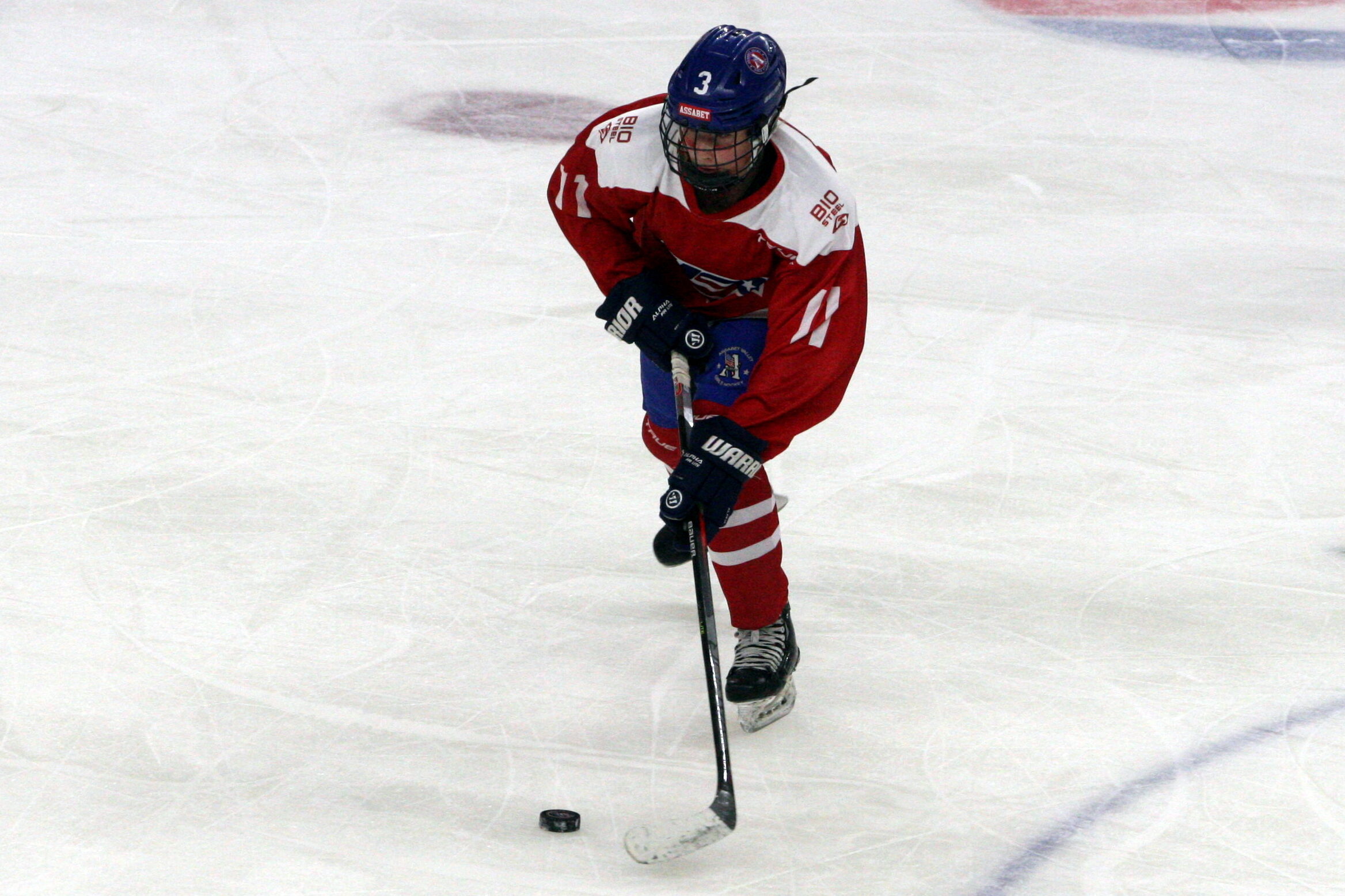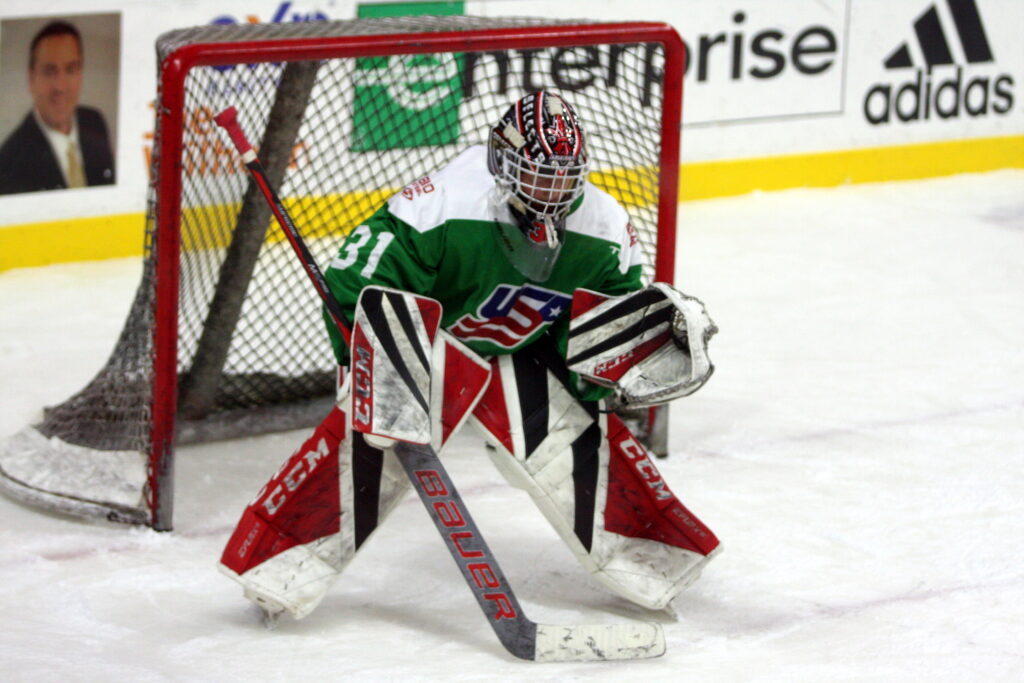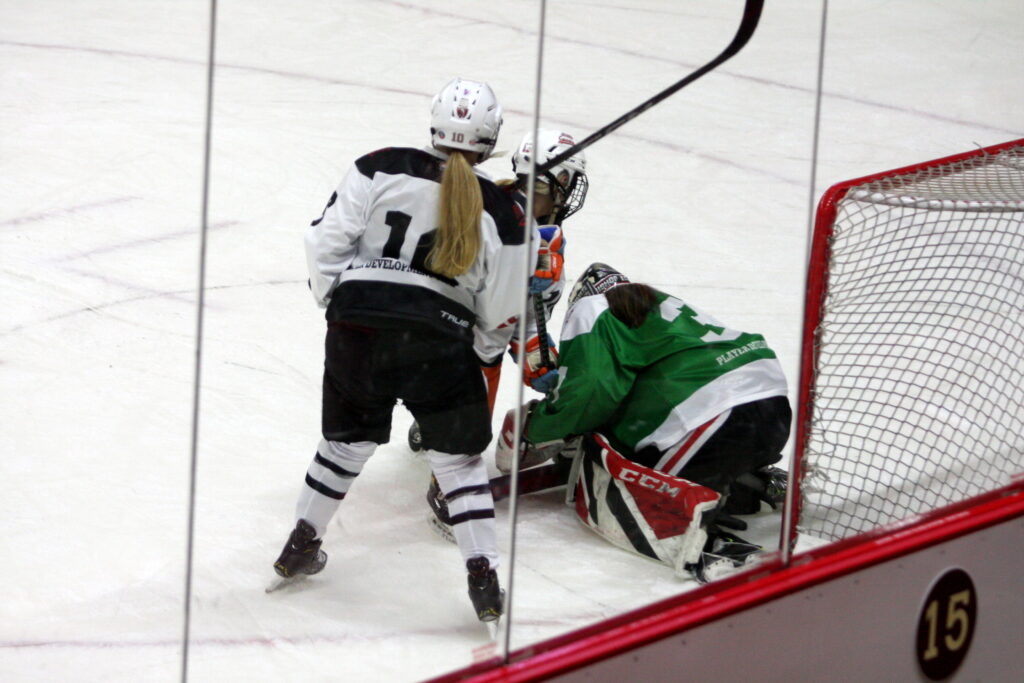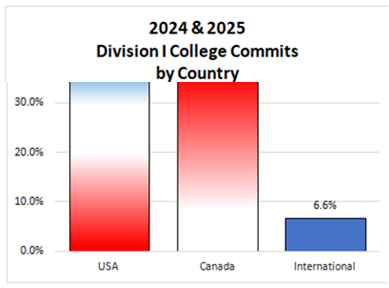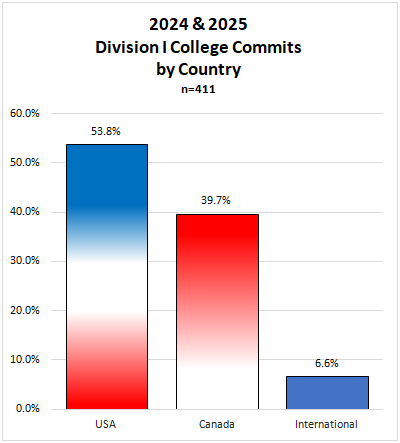| College Hockey Showcases | Florida Spring Break Showcase | April 21-27, 2025 | 4/21/2025 | 4/27/2025 | | Fort Meyers, FL | 2006-2012 Birth Years |
| College Hockey Showcases | Pre- Showcase Mini Camp | April 21-23, 2025 | 4/21/2025 | 4/23/2025 | | Fort Meyers, FL | 2006-2012 Birth Years |
| College Hockey Showcases | Spring Break Showcase | April 24-26, 2026 | 4/24/2025 | 4/26/2025 | | Fort Meyers, FL | 2006-2012 Birth Years |
| College Hockey Showcases | World Goalie Summit | April 26-27, 2025 | 4/26/2025 | 4/27/2025 | | Fort Meyers, FL | 2006-2012 Birth Years |
| College Hockey Showcases | Girls High Performance Camp
Week 1 | July 14-18 2025 | 7/14/2025 | 7/18/2025 | Nyköpings Arenor Rosvalla | Nyköping, Sweden | 2012-2005 Birth Years |
| College Hockey Showcases | Girls High Performance Camp 2 | July 14th-25th, 2025 | 7/14/2025 | 7/25/2025 | | Nyköping, Sweden | 2012-2005 Birth Years |
| College Hockey Showcases | Girls High Performance Camp Week 2 | July 21-25, 2025 | 7/21/2025 | 7/25/2025 | | Nykoping, Sweden | 2012-2005 Birth Years |
| College Hockey Showcases | Sun Valley Idaho Showcase | Dec 13-15, 2025 | 12/13/2025 | 12/15/2025 | | Sun Valley, Idaho | 2006-2011 Birth Years |
| Premier Ice Prospects | Hockey Hall of Fame Future Legends | April 24-27, 2025 | 4/24/2025 | 4/27/2025 | | Toronto, ON | 2013 Birth Years |
| Premier Ice Prospects | THE BURGH GIRLS FEST | Nov 28 - Nov 30, 2025 | 11/28/2025 | 11/30/2025 | | Pittsburgh, PA | 2005 - 2014 Birth Years |
| Premier Ice Prospects | CCM Windy City Girls Elite | December 6-8, 2025 | 12/6/2025 | 12/8/2025 | | Chicago, IL | 12U-19U |
| Premier Ice Prospects | CCM Mountain Mayhem | January 17 - 19, 2025 | 1/17/2025 | 1/19/2025 | | Denver, CO | 19U through 14U |
| Premier Ice Prospects | CCM Mountain Mayhem | January 18 - 20, 2025 | 1/18/2025 | 1/20/2025 | | Denver, CO | 19U through 14U |
| Premier Ice Prospects | CCM MLK Girls | Jan. 18-20, 2025 | 1/18/2025 | 1/20/2025 | | Massachusetts | 12U-19U |
| Premier Ice Prospects | CCM Chi-Town Shuffle | Apr. 25-27, 2025 | 4/25/2025 | 4/27/2025 | | Chicago, IL
| 2017-2006 |
| Premier Ice Prospects | PIPs | June 20 - 22, 2025 | 6/20/2025 | 6/22/2025 | | Rochester, NY | 2014 - 2011 Birth Years
Tier I & Tier 2 |
| Premier Ice Prospects | CCM Shoulder Check 14U Showcase | July 25-27, 2025 | 7/25/2025 | 7/27/2025 | | Stamford, CT
| 14U |
| Premier Ice Prospects | Nashville Showdown | August 8-10,2025 | 8/8/2025 | 8/10/2025 | | Nashville, TN | 2013 - 2015 Birth Years |
| Premier Ice Prospects | Chicago Deep Dish | October 17 - 19, 2025 | 10/17/2025 | 10/19/2025 | | Chicago, IL | 19U through 10U |
| Premier Ice Prospects | CCM Girls World Invite | Nov. 7-9, 2025 | 11/7/2025 | 11/9/2025 | | Detroit, MI | 10U-19U |
| Premier Ice Prospects | CCM PIP Training Camp Notre Dame | May 2-4, 2025 | 5/2/2025 | 5/4/2025 | Compton Family Ice Arena | South Bend, IN | 10U, 12U, 14U |
| Premier Ice Prospects | Premier Prep Prospects | May 8 - 11, 2025 | 5/8/2025 | 5/11/2025 | The Edge Sports Center | Bedford, MA | 2010 - 2013 Birth Years |
| Premier Ice Prospects | Premier Ice Prospects | May 9 - 11, 2025 | 5/9/2025 | 5/11/2025 | The Edge Sports Center | Bedford, MA | 2010 & 2011 Birth Years |
| Premier Ice Prospects | Top Prospects | May 16 - 18, 2025 | 5/16/2025 | 5/18/2025 | | Ft. Lauderdale, FL | 2011 - 2014 Birth Year |
| Premier Ice Prospects | CCM 68 Futures Camp | May 30 - June 1, 2025 | 5/30/2025 | 6/1/2025 | | Boston, MA | |
| Premier Ice Prospects | Western Prospects Camp | May 31 - June 2, 2025 | 5/31/2025 | 6/2/2025 | Kraken Community Iceplex | Seattle, WA | 2013 - 2014 Birth Years |
| Premier Ice Prospects | Western Prospects Camp | June 1 - 2, 2025 | 6/1/2025 | 6/2/2025 | Kraken Community Iceplex | Seattle, WA | 2008- 2010 Birth Years |
| Premier Ice Prospects | 585 PIP Showcase - Roc City Style | June 6 - 9, 2025 | 6/6/2025 | 6/9/2025 | Tim Horton's Iceplex | Rochester, NY | 2008 - 2010 Birth Years |
| Premier Ice Prospects | ELITE PROSPECTS CAMP | June 22 - 26, 2025 | 6/22/2025 | 6/26/2025 | Tim Horton's Iceplex | Rochester, NY | 2012 - 2014 Birth Years |
| Premier Ice Prospects | 14U PROSPECTS CAMP | June 22 - 26, 2025 | 6/22/2025 | 6/26/2025 | Tim Horton's Iceplex | Rochester, NY | 2011 Birth Years |
| Premier Ice Prospects | PROSPECTS GOALIE CAMP | June 22 - 26, 2025 | 6/22/2025 | 6/26/2025 | Tim Horton's Iceplex | Rochester, NY | 2009 - 2014 Birth Years |
| Premier Ice Prospects | PREMIER PROSPECTS COMBINE | July 10 - 13, 2025 | 6/10/2025 | 6/13/2025 | UPMC Sports Complex | Cranberry, PA | 12U (2013/2014) & 14U (2011/2012) |
| Premier Ice Prospects | Snipe City Halifax | June 28 - 30, 2025 | 6/2025 | 6/2025 | RBD Centre | Halifax, NS | 2007 - 2012 Birth Years |
| Premier Ice Prospects | SOUTHERN PROSPECTS CAMP | July 2025 | TBD | 7/2025 | Community First Igloo | Jacksonville, FL | 12U (2013/2014) & 10U (2015/2016) |
| Premier Ice Prospects | CCM 68 Future ID Camp | July 18-20, 2025 | 7/18/2025 | 7/20/2025 | | East Lansing, MI | 2012 Birth Year |
| Premier Ice Prospects | 617 PIP SHOWCASE - BOSTON HARBOR STYLE | June 30 - July 1, 2025 | 6/30/2025 | 7/1/2025 | The Edge Sports Center | Bedford, MA | 2026, 2027 & 2028 Grad Years Only |
| Premier Ice Prospects | NORTHEAST PROSPECTS CAMP | June 30 - July 1, 2025 | 6/30/2025 | 7/1/2025 | The Edge Sports Center | Bedford, MA | 2013 - 2016 Birth Years |
| Premier Ice Prospects | CCM 68 Combine Girls | Aug 6-10, 2025 | 6/6/2025 | 6/10/2025 | | Chicago, IL | 2011 Birth Year |
| Premier Ice Prospects |
CCM 68 Future ID Camp | Aug 15-17, 2025 | 8/15/2025 | 8/17/2025 | | Niagara, ON | 2012 Birth Year |
| Premier Ice Prospects | 615 PIP SHOWCASE - MUSIC CITY STYLE | August 7 - 10, 2025 | 8/7/2025 | 8/10/2025 | Predators' Ford Ice Center | Bellevue, TN | 2011 - 2012 Birth Years |
| Premier Ice Prospects | NIAGARA FALLS PROPSPECTS CAMP | August 15 - 17, 2025 | 8/15/2025 | 8/18/2025 | Gale Centre Arena | Niagara Falls, ON | Jr Camp - 2008, 2009 & 2010 Birth Years
U15 Camp - 2011 & 2012 Birth Years |
| Premier Ice Prospects | Mrs. Hockey® Invite | January 17-20, 2025 | 1/17/2025 | 1/20/2025 | | Ft Lauderdale, FL | 12U USA Tier I & Tier II & U13 Canadian AA & BB/B |
| Premier Ice Prospects | Fort Laudy Daudy Showcase | January 17-19, 2025 | 1/17/2025 | 1/20/2025 | | Ft Lauderdale, FL | 14U USA Tier I (AAA) / CAN AA |
| Premier Ice Prospects | Great Lakes Girls Fest | February 7 - 9, 2025 | 2/7/2025 | 2/8/2025 | | Detroit, MI | 19U through 10U
USA - Tier II
Canadian - A / BB / B |
| Premier Ice Prospects | Motor City Girls Fest | February 7-9, 2025 | 2/7/2025 | 2/9/2025 | | Detroit, MI | 19U through 10U
USA Tier I / Canada AA |
| Premier Ice Prospects | PIPs Rochester Tournament | June 20-22,2025 | 6/20/2025 | 6/22/2025 | Tim Horton's Iceplex | Rochester, NY | 2011 - 2014 Birth Years |
| Premier Ice Prospects | Snipe City Showcase | August 11-14,2025 | 8/11/2025 | 8/14/2025 | | Whitby, ON | 2007-2014 Birth Years |
| Premier Ice Prospects | Labor Day Girls Fest | August 29 - 31, 2025 | 8/29/2025 | 8/31/2025 | | Pittsburgh, PA | 14U/U15, 16U/U18 & 19U/U22
USA Tier I / Canadian AA |
| Premier Ice Prospects | Frieda Falcon Girls Fest | September 4 - 7, 2025 | 9/4/2025 | 9/7/2025 | Slater Family Ice Arena | Bowling Green, OH | 12U USA Tier I / CAN A |
| Premier Ice Prospects | Capital Cup Girls Fest | October 10 - 13, 2025 | 10/10/2025 | 10/13/2025 | | Northern VA | 19U through 10U
USA - Tier II
Canadian - A, BB & B |
| Premier Ice Prospects | CCM Dallas | Oct 11-13, 2025 | 10/11/2025 | 10/13/2025 | | Dallas, TX | G12U & G14U |
| Premier Ice Prospects | Roc City Girls Fest | October 31 - November 2, 2025 | 10/31/2025 | 11/2/2025 | | Rochester, NY | 8U/U9, 10U/U11 and 12U/U13 |
| Premier Ice Prospects | Roc City Girls Fest | November 7 - 9, 2025 | 11/7/2025 | 11/9/2025 | | Rochester, NY | 14U/U15 through 19U/U22 |
| Premier Ice Prospects | Burgh Thanksgiving Girls Fest | November 28-30, 2025 | 11/28/2025 | 11/30/2025 | | Pittsburgh, PA | 19U through 10U |
| Premier Ice Prospects | SMASHVILLE GIRLS HOCKEY SHOWCASE | November 28-30, 2025 | 11/28/2025 | 11/30/2025 | | Nashville, TN | 19U THROUGH 14U |
| Premier Ice Prospects | Erie White Out Weekend | December 13-15, 2025 | 12/13/2025 | 12/15/2025 | | Erie, PA | 12U and 10U Tier I (AAA), Tier II (AA) |
| RUSH Hockey | Florida RUSH | January 17-20, 2025 (MLK Weekend) | 1/17/2025 | 1/20/2025 | Palm Beach Skate Zone | West Palm Beach, FL | Girls Tier 1/Tier 2/ Tier 3 (10U, 12U, 14U, 16U, 19U) |
| RUSH Hockey | Rush Spring Showcase (Florida) | April 25-27, 2025 | 4/25/2025 | 4/27/2025 | Palm Beach Skate Zone | Lake Worth, FL | 2012 and 2013 Birth Years
2005-2007 Birth Years
2008-2011 Birth Years |
| RUSH Hockey | Rush College Showcase | June 5-8, 2025 | 6/5/2025 | 6/8/2025 | CAA Centre Brampton | Brampton, ON | 2008 and 2011 Birth Years |
| RUSH Hockey | RUSH Rising Stars Pre-College Showcase | June 6-8, 2025 | 6/6/2025 | 6/8/2025 | CAA Centre, Brampton | Brampton, ON | 2012 and 2013 Birth Years |
| RUSH Hockey | RUSH ATOMIC CHALLENGE | June 6-8, 2025 | 6/6/2025 | 6/8/2025 | CAA Centre Brampton | Brampton, ON | 2014 and 2015 Birth Years |
| RUSH Hockey | RUSH Hockey High Performance | 2025 TBA | | | CAA Centre Brampton | Brampton, ON | U11 (2014-2015) Tier 1 & 2
U13 (2012-2013) Tier 1 & 2
U15 (2010-2011) Tier 1 & 2
U18 (2007-2008-2009) Tier 1 & 2
U22 Tier 1 & 2 |
| RUSH Hockey | Beantown Women's Classic | July 18-20, 2025 | 7/18/2025 | 7/20/2025 | New England Sports Center | Marlborough, MA | 2010 (09) - 2015 Birth Years |
| RUSH Hockey | Beantown Women's Classic | July 25-27, 2025 | 7/25/2025 | 7/27/2025 | New England Sports Center | Marlborough, MA | 19U/16U |
| RUSH Hockey | BEANTOWN CLASSIC Weekend 1 | July 18-20, 2025 | 7/18/2025 | 7/20/2025 | New England Sports Center | Marlborough, MA | 2010 (09) - 2015 Birth Years |
| RUSH Hockey | BEANTOWN CLASSIC Weekend 2 | July 25-27, 2026 | 7/26/2025 | 7/28/2025 | New England Sports Center | Marlborough, MA | 19U/16U
Futures 2009 (10) |
| RUSH Hockey | Beantown Winter Classic | January 3-5, 2025 | 7/3/2025 | 7/5/2025 | New England Sports Center | Boston, Massachusetts | 18U-16U |
| RUSH Hockey | BUFFALO RUSH HOCKEY INFERNO | Oct 31 – Nov 2, 2025 | 10/31/2025 | 11/2/2025 | Holiday Twin Rinks
Leisure Rinks | Buffalo, NY
West Seneca, NY | Tier 1 / Tier 2 / Tier 3 (10U, 12U, 14U, 16U, 19U) |
| RUSH Hockey | TEXAS RUSH | February 7-9, 2025 | 2/7/2025 | 2/9/2025 | StarCenter Valley Ranch Ice Rink | Dallas, TX | Girls Tier 1/Tier 2 (12U, 14U, 16U, 19U) |
| RUSH Hockey | Arizona RUSH Matt Shott Memorial | November 7-9, 2025 | 11/7/2025 | 11/9/2025 | AZ ICE Gilbert
AZ Ice Arcadia
Coyotes Community Ice Center (Mesa) | Gilbert, AZ
Phoenix, AZ
Mesa, AZ | Girls Tier 1/Tier 2 (10U, 12U, 14U, 16U, 19U) |
| RUSH Hockey | NORTH HALTON RUSH | September 5-7, 2025 | 9/5/2025 | 9/7/2025 | CAA Centre Brampton
Mold-Masters SportsPlex | Brampton, ON
Halton Hills, ON | AA/A/BB/B (U11, U13, U15, U18, U22) |
| RUSH Hockey | TWO NATIONS COLLEGE PREP SERIES | December 5-7, 2025 | 12/5/2025 | 12/7/2025 | Brampton: Century Gardens | Brampton, ON | 19U through 12U Tier 1; U13-U21 AA |
| RUSH Hockey | TWO NATIONS COLLEGE PREP SERIES | Oct 24-26, 2025 | 10/24/2025 | 10/26/2025 | Detroit: Taylor Sportsplex | Detroit, MI | 19U through 12U Tier 1; U13-U21 AA |
| Showcase Hockey | MINNESOTA MELTDOWN | April 25-27, 2025 | 4/25/2025 | 4/27/2025 | |
Minneapolis, MN | 10U-19U |
| Showcase Hockey | DRAFTDAY INTERNATIONAL &
REGIONAL SPRING ID SKATES | January 2, 2025 | 1/2/2025 | 1/2/2025 | | Brantford, ON | 2019-2010 (Elite, AAA, AA) |
| Showcase Hockey | Independent Classic | May 16-18, 2025 | 5/16/2025 | 5/18/2025 | | Minneapolis, MN | 8U-19U |
| Showcase Hockey | Summer Showdown |
June 6-8, 2025 | 6/6/2025 | 6/8/2025 | | Minneapolis, MN | AAA (10U, 12U, 14U, 16U, 19U) |
| Showcase Hockey | International Cup | August 1-3, 2025 | 8/1/2025 | 8/3/2025 | | Minneapolis, MN | 8U-19U |
| Showcase Hockey | Easton Cup | August 15-17, 2025 | 8/15/2025 | 8/17/2025 | | Minneapolis, MN | 10U-19U |
| Showcase Hockey | Summer Finale | August 22-24, 2025 | 8/22/2025 | 8/24/2025 | | Minneapolis, MN | 8U-19U |
| Showcase Hockey | Warrior Cup | September 5-7, 2025 | 9/5/2025 | 9/7/2025 | |
Greater Minneapolis | AAA (10U, 12U, 14U, 16U, 19U) |
| 200x85 Tournaments | CCM MLK Invite | Jan. 18-20, 2025 | 1/18/2025 | 1/20/2025 | | Massachusetts
/ Rhode Island | 2015-2010, 15's & 16U |
| 200x85 Tournaments | CCM CHI-TOWN SHUFFLE | Apr. 25-27, 2025 | 4/25/2025 | 4/27/2025 | | Chicago, IL | 12U - 14U, 16U - 19U |
| The National Girls Hockey League | NGHL Goalie Camp ONLY | 5/16/2025 | 5/16/2025 | 5/16/2025 | | York, PA | 2007-2011 Birth Years |
| The National Girls Hockey League | College Exposure Clinic | TBD | | | | Northford, CT | 2007-2011 Birth Years |
| The National Girls Hockey League | NGHL College Exposure Camp | May 17-18, 2025 | 5/17/2025 | 5/18/2025 | York Ice Arena
| York, PA | 2007-2011 Birth Years |
| The National Girls Hockey League | NGHL NCAA Exposure Camp | June 7-8, 2025 | 6/7/2025 | 6/8/2025 | | Cromwell, CT | 2007-2011 Birth Years |
| The National Girls Hockey League | NGHL NCAA Clinic | August 21, 2025 | 8/21/2025 | 8/21/2025 | | Syracuse, NY | 2007-2011 Birth Years |
| The National Girls Hockey League | NGHL NCAA Clinic | October 10, 2025 | 10/10/2025 | 10/10/2025 | | | |
| The National Girls Hockey League | Dawg Daze Of Summer | August 2025 | | | | Northford, CT | 12U-19U |
| The National Girls Hockey League | Dawg Days of Summer - Futures | | | | | Newington, CT | 12U |
| The National Girls Hockey League | Labor Day Challenge - Blue | August 29 - September 1, 2025 | 8/29/2025 | 9/1/2025 | | Cromwell, CT | 12U-19U |
| The National Girls Hockey League | Labor Day Challenge - Futures | August 29 - September 1, 2025 | 8/29/2025 | 9/1/2025 | | Cromwell, CT | 12U |
| The National Girls Hockey League | Fall Classic - Red | October 12-14, 2025 | | | | Syracuse, NY | 14U-19U |
| The National Girls Hockey League | Pittsburgh Showcase | October 12-14, 2025 | | | | Pittsburgh, PA | 14U-19U |
| The National Girls Hockey League | Fall Classic - Futures East | September 27-29, 2025 | | | | Rochester, NY | 12U |
| The National Girls Hockey League | Fall Classic - Futures West | October 12-14, 2025 | | | | Chicago, IL | 10U & 12U |
| The National Girls Hockey League | Fall In CT, Futures | October 12-14, 2025 | | | | Connecticut | 10U & 12U A/AA |
| The National Girls Hockey League | NGHL Ann Arbor | November 15-17, 2025 | | | | Ann Arbor, MI | 14U - 19U Tier 1 |
| The National Girls Hockey League | Northern Classic | November 22-24, 2025 | | | | Utica, NY | 10U, 12U, 14U |
| The National Girls Hockey League | Mile High Invitational - Blue | November 29-December 1, 2025 | | | | Denver, CO | 12U-19U |
| The National Girls Hockey League | MLK Winter Classic - Blue | January 18-20,2025 | 1/18/2025 | 1/20/2025 | | Haverhill, MA | 14U-19U |
| The National Girls Hockey League | Winter Classic, Futures | January 3-5, 2025 | 1/3/2025 | 1/5/2025 | | Princeton, NJ | 10U & 12U |
| The National Girls Hockey League | Red Division Champsionship | January 31- February 2, 2025 | 1/31/2025 | 2/2/2025 | | Rockland, MA | 14-19U |
| The National Girls Hockey League | Blue Division Champsionship | February 15-17, 2025 | 2/15/2025 | 2/17/2025 | | Chicago, IL | 14-19U |
| The National Girls Hockey League | Futures Division Championship | Febraury 7-9, 2025 | 2/7/2025 | 2/9/2025 | | Hershey, PA | 10U & 12U |
| North American Premier Women's Showcase | North American Premier Women's Showcase College Division | June 2025 | | | Merrimack College Athletics Complex | North Andover, MA | Birth Years 2007-2011 (PG's also Allowed) |
| JWHL | Challenge Cup 2025 | March 14-16,2025 | 3/14/2025 | 3/16/2025 | | Rockville/Arlington, VA | 14U, 16U, 19U |
| North American Female Elite Showcase | NORTH AMERICAN FEMALE ELITE SHOWCASE (THE ORION TOP PROSPECTS) | June 12-15, 2025 | 6/12/2025 | 6/15/2025 | National Sports Center - Super Rink | Blaine, MN | U18(08/09)-2010-2011-2012-2013-2014 Birth Years |
| North American Female Elite Showcase | The College Combine | June 23-25, 2025 | 6/23/2025 | 6/25/2025 | | Boston, MA | 2009 - 2010 Birth Years |
| North American Female Elite Showcase | THE ORION CUP | May 16-18, 2025 | 5/16/2025 | 5/18/2025 | South Suburban Sports Center | Highlands Ranch, CO | 2011 - 2014 Birth Years |
| Pony Tail Tournament | Pony Tail Tournament | March 21-23, 2025 | 3/21/2025 | 3/23/2025 | | Baltimore, MD | 12U |
| The Rose Series | Cowgirl Shootout | April 17-20, 2025 | 4/17/2025 | 4/20/2025 | Ford Ice Center-Bellevue
Ford Ice Center-Antioch
Nolensville | Nashville, TN | 2013 Birth Years |
| The Rose Series | Beantown Bash | May 9-11, 2025 | 5/9/2025 | 5/11/2025 | Boston area rink | Boston, MA | 2012-2013-2014-2015 Birth Year |
| The Rose Series | The Battle at the Beach | May 8-11, 2025 | 5/8/2025 | 5/11/2025 | Panthers Ice Den | Ft. Lauderdale, FL | 2011 Birth Year |
| The Rose Series | Cwench World Invite | June 25-29, 2025 | 6/25/2025 | 6/29/2025 | Scotiabank Pond
Maple Leaf Gardens (Mattamy) | Toronto, ON | 2010 Birth Year |
| The Rose Series | Queens of Vegas | July 8-11, 2025 | 7/8/2025 | 7/11/2025 | City National Arena | Las Vegas, NV | 2014 Birth Year |
| The Rose Series | PARK CITY SHOWDOWN | July 10-13, 2025 | 7/10/2025 | 7/13/2025 | Park City Ice Arena | Park City, Utah | 2015 Birth Year |
| The Rose Series | War for the Roses | July 7-12, 2025 | 7/7/2025 | 7/12/2025 | West Edmonton Mall | Edmonton, Alberta | 2012 Birth Year |
| USA Hockey | USA Hockey Girls National 15 Camp | July 24-29, 2025 | 7/24/2025 | 7/29/2025 | | Oxford, Ohio | 2010 Birth Year |
| USA Hockey | Girls 15 Goalie Camp | July 22-24, 2025 | 7/22/2025 | 7/24/2025 | | Oxford, Ohio | 2010 Birth Year |
| USA Hockey | USA Hockey Girls National 16/17 Camp | July 19-23, 2025 | 7/19/2025 | 7/24/2025 | | Oxford, Ohio | 2009 & 2008 Birth Year |
| USA Hockey | Girls National U-19 Training Camp | July 18-21, 2025 | 7/18/2025 | 7/21/2025 | | Oxford, Ohio | 2006-2007 Birth Year |
| USA Hockey | USA Hockey Girls Under 18 Player Development Camp | August 3-9, 2025 | 8/3/2025 | 8/9/2025 | | Northwood School, Lake Placid, N.Y | 2008, 2009, 2010 Birth Year |
| USA Hockey | 2025 Women's National Festival | August 3-9, 2025 | 8/3/2025 | 8/9/2025 | | Northwood School, Lake Placid, N.Y | |
| OS Hockey | FUTURES CAMP (Plymouth) Weekend 1 | May 31- June 2, 2025 | 5/31/2025 | 6/2/2025 | | Plymouth, MN | 7th-8th grade |
| OS Hockey | FUTURES CAMP (Eden Prairie) Weekend 2 | June 20 - June 22, 2025 | 6/20/2025 | 6/22/2025 | | Eden Prairie, MN | 7th-8th grade |
| OS Hockey | PROSPECTS (Plymouth) Weekend 1 | May 31- June 2, 2025 | 5/31/2025 | 6/2/2025 | | Plymouth, MN | 9th-11th Grade |
| OS Hockey | PROSPECTS (Eden Prairie) Weekend 2 | June 20 - June 22, 2025 | 6/20/2025 | 6/22/2025 | | Eden Prairie, MN | 9th-11th Grade |
| OS Hockey | 2025 OS SPRING FESTIVAL | March 16th-19th, 2025 | 3/16/2025 | 3/19/2025 | Braemar Arena | MInneapolis, MN | |
| OS Hockey | 2025 WHITECAPS CUP (HS) | May 3-5, 2025 | 5/3/2025 | 5/5/2025 | | MInneapolis, MN | High School |
| OS Hockey | 2025 TRADITION CUP | August 2-4, 2025 | 8/2/2025 | 8/4/2025 | Braemar Arena | MInneapolis, MN | College Level |
| OS Hockey | 2025 Os Shootout | August 15th-17th, 2025 | 8/15/2025 | 8/17/2025 | New Hope Ice Arena and Eagan Civic Center | New Hope, MN | |
| Girls Elite Hockey | 2025 TRADITION NIT | October 16-19, 2025 | 10/16/2025 | 10/19/2025 | Fogerty Ice Arena
The Super Rink at National Sports Center
TCO Sports Garden | Blaine, MN
Vadnais Heights, MN | |
| NCD Camps | 2025 Girls NCD Camp | July 28-30, 2025 | 7/28/2025 | 7/30/2025 | New England Sports Center | Marlborough, MA | 2026,2027,2028,2029 grads |
| NAHA | NAHA COLLEGE SHOWCASE | July 11-13, 2025 | 7/11/2025 | 7/13/2025 | Boston Sports Institute | Wellesley, MA | 2026, '27, '28. '29 Grad Years |
| NAHA | NAHA Labor Day Tournament | August 30-31, 2025 | 8/30/2025 | 8/31/2025 | | Boston, MA | U14, U16, U19 |
| University of Wisconsin | 13 and Under Camp | June 23-27, 2025 | 6/23/2025 | 6/27/2025 | LaBahn Arena | Madison, WI | 13 and under |
| University of Wisconsin | High School Elite Camp | August 3-8,2025 | 8/3/2025 | 8/8/2025 | LaBahn Arena | Madison, WI | High School |
| Princeton University | GIRLS ICE HOCKEY ELITE CAMP | June 21-23, 2025 | 6/21/2025 | 6/23/2025 | Baker Rink | Princeton, NJ | Entering grades 10-12 |
| Princeton University | GIRLS ICE HOCKEY EXPOSURE ID CAMP | July 7-9, 2025 | 7/7/2025 | 7/9/2025 | Baker Rink | Princeton, NJ | Entering grades 7-9 |
| Merrimack College | Merrimack Womens Ice Hockey Clinics | February 23, 2025 | 2/23/2025 | | Lawler Arena | North Andover, MA | Entering grades 9-12 |
| Merrimack College | 2025 Spring Prospect Clinic | April 25-27, 2025 | 4/25/2025 | 4/27/2025 | | | |
| RinkSport | RinkSport NCAA Prep Camp | JUNE 14 - 19, 2025 | 6/14/2025 | 6/19/2025 | Babson College | Wellesley, MA | 2029 High School graduates or earlier |
| Pre-Prep Showcase | 31st ANNUAL PRE-PREP SHOWCASE | AUGUST 7th-10th, 2025 | 8/7/2025 | 8/10/2025 | | | Birth Years: 2010, 2011 & 2012 |
| Ohio State University | Tuesday Night Youth Camp | OCT 8- DEC 17, 2025 | 10/8/2025 | 12/17/2025 | OSU Ice Arena | Columbus, OH | 2014, 2015, 2016 |
| Ohio State University | MINNESOTA CAMP | June 3-5, 2025 | 6/3/2025 | 6/5/2025 | St. Louis Park Rec Center | St. Louis Park, MN | Grad Years: 2027-2030 |
| Ohio State University | HIGH SCHOOL ELITE CAMPS | June 2025 | | | OSU Ice Rink | Columbus, OH | Grad Years: 2027-2030 |
| Ohio State University | Ohio State Women’s Ice Hockey Minnesota | June 3, 4 & 5, 2025 | 6/3/2025 | 6/5/2025 | St. Louis Park Rec Center | St. Louis Park, MN | Grad Years: 2027-2028 |
| Ohio State University | | June 3, 4 & 5, 2025 | 6/3/2025 | 6/5/2025 | St. Louis Park Rec Center | St. Louis Park, MN | Grad Years: 2029 - 2030 |
| University of Maine | U16/19 High School Girls' Hockey Camp | July 2025 | | | University of Maine | Orono, ME | Grades 8-12 |
| University of Maine | 2025 University of Maine Women's Hockey Summer Camp and Showcase | 2025 | | | University of Maine | Orono, ME | U16/U19, U8/U10/U12 |
| University of Maine | Women's Prospect Clinic | July 2025 | | | University of Maine | Orono, ME | Grades 8-12 |
| Brown University | BROWN WOMEN’S HOCKEY ELITE SUMMER CAMP | July 28-30, 2025 | 7/28/2025 | 7/30/2025 | Brown University | Providence, RI | High school students entering grades 9-12. Therefore, 2025, 2026, 2027 and 2028 high school graduates. |
| Mercyhurst University | DIVISION I WOMEN'S HOCKEY ELITE CAMP | July 2025 | | | Mercyhurst University | Erie, PA | 2006 to 2009 birth year |
| Colgate University | 2025 COLGATE EXPOSURE CAMP | SESSION 1 | July 9-11, 2025 | | | Colgate University | Hamilton, NY | All Female players born between 2007-2010 |
| Colgate University | 2025 COLGATE EXPOSURE CAMP | SESSION 2 | July 11-13, 2025 | | | Colgate University | Hamilton, NY | All Female players born between 2007-2010 |
| College of the Holy Cross | Holy Cross Women's Ice Hockey Clinics | TBD | | | Hart Center | Worcester, MA | 14-19 Years Old |
| St Anselm College | | TBD | | | Sullivan Arena | Bedford, NH | |
| Clarkson University | Clarkson Golden Knight Women's Hockey Prospect Camp 2025 | July 2025 | | | Cheel Campus Center and Arena | Potsdam, NY | 2007-2010 Birth Years |
| St Cloud State University | St. Cloud State Women's Hockey Camps | | | | Herb Brooks National Hockey Center | St. Cloud, Minnesota | Ages 6-16 |
| Sacred Heart University Pioneers | Girls Ice Hockey High School Prospect Camp | June 30 - July 2, 2025 | 6/30/2025 | 7/2/2025 | Martire Family Arena | Fairfield, CT | Girls: 9th to 12th Grade |
| Quinnipiac University | Quinnipiac Women's Ice Hockey Girls Camp | July 2025 | | | M&T Bank Arena | Hamden, Conn | Ages: 6-13 |
| Quinnipiac University | Quinnipiac Women's Ice Hockey Girls Elite Clinic | July 2025 | | | M&T Bank Arena | Hamden, Conn | Ages: rising 8th, 9th, 10th, 11th, 12th grade |
| University of Minnesota | MINNESOTA GIRLS HOCKEY CAMPS | June 11-13, 2025 | 6/11/2025 | 6/13/2025 | University of Minnesota | Minneapolis, MN | Ages 8-10 |
| University of Minnesota | MINNESOTA GIRLS HOCKEY CAMPS | June 11-13, 2025 | 6/11/2025 | 6/13/2025 | University of Minnesota | Minneapolis, MN | Ages 11 or 12 |
| University of Minnesota | Exposure Camp | June 13-14, 2025 | 6/13/2025 | 6/14/2025 | University of Minnesota | Minneapolis, MN | Exposure Camp (ages 13,14) |
| University of Minnesota | High School Varsity Camp #1 | June 16-18, 2025 | 6/16/2025 | 6/18/2025 | University of Minnesota | Minneapolis, MN | High school aged girls |
| University of Minnesota | High School Varsity Camp #2 | June 18-20, 2025 | 6/18/2025 | 6/20/2025 | University of Minnesota | Minneapolis, MN | High school aged girls |
| University of Minnesota Duluth | Minnesota Duluth High School Elite Camp | August 2025 | | | Amsoil Arena | Duluth, MN | Any and all high school girls (grad years 2025-2028) are invited |
| College Development Showcase | CDS GIRLS CAMP | June 28-29, 2025 | 6/28/2025 | 6/29/2025 | Ice Den | Hooksett, NH | 2005-2010 Birth years |
| Boston College | Maroon and Gold Women’s Combine | TBD | | | Conte Forum | Chestnut Hill, MA | 2010-2011-2012 players |
| National Sports Center | All American Girls Hockey Tournament | | | | NSC-Super Rink (Blaine) | Blaine, MN | Girls U10A,B U12A,B U15A |
| National Sports Center | The Rush 3V3 Festival | February 17 , 2025
| 2/17/2025 | 2/17/2025 | | | Girls U8/U10A/U10B |
| National Sports Center | Intensity Hockey Fall Camp | September 3 , 2025 | 9/3/2025 | 9/29/2025 | NSC Super Rink | Blaine, MN | Girls 10U/12U |
| National Sports Center | All American Girls Hockey Tournament | November 6 , 2025 | 11/6/2025 | 11/9/2025 | NSC Super Rink | Blaine, MN | U10A, U10B, U12A, U12B, U15A |
| Youth Hockey Hub | 2025 DANGLEFEST | | | | NSC-Super Rink (Blaine) | Blaine, MN | Girls U10A, U10B, U12A, U12B, U15A, & U15B |
| Youth Hockey Hub | 2025 YHH SQUIRTACULAR TOURNEY | January 23 - 26, 2025 | 1/23/2025 | 1/26/2025 | Super Rink (Blaine) | | |
| Youth Hockey Hub | 2025 Stars of Tomorrow | March 20, 2025 to March 23, 2025 | 3/20/2025 | 3/23/2025 | Eden Prairie and Shakopee | Minnesota | 2012 to 2016 |
| Fierce Edge Athletics | FIERCE FEMALE HOCKEY TOURNAMENT 2025 | June 2025 | | | Canlan Oshawa | Oshawa, ON | U9/ U11 (Tier 1 & Tier 2)/ U13 (Tier 1,Tier 2) |
| Fierce Edge Athletics | Fierce ID Series - SHOWCASE EVENT | June, 2025 | | | Canlan Oshawa | Oshawa, ON | 2010-2011 ; 2009-2007 + 06* (GRADUATION YEAR 2025) DIVISION |
| SDR Academy | SDR Scouting Summit Showcase | June 20-22, 2025 | 6/20/2025 | 6/22/2025 | | Calgary, AB | 2008-2012 YOB |
| RINK Hockey Academy Kelowna | Female University Showcase | April 3 - 6, 2025 | 4/4/2025 | 4/6/2025 | Winfield Arena | Kelowna, BC | 2007-2011 YOB |
| RINK Hockey Academy Kelowna | RHA Winter Classic | January 31 - February 2, 2025 | 1/31/2025 | 2/2/2025 | Kal Tire Place | Vernon, BC | U19 Prep |
| RINK Hockey Academy Winnipeg | Female University Showcase 2025 | April 25th - 27th, 2025 | 4/25/2025 | 4/27/2025 | Rink Training Center | Winnipeg, MB | 2007-2011 (2012) YOB |
| Delta Hockey Academy | DHA Female University Showcase | April 8-9, 2025 | 4/8/2025 | 4/9/2025 | Planet Ice Delta | Delta, B.C | |
| Delta Hockey Academy | Evaluation Camp | April 2 -April 4, 2025 | 4/2/2025 | 4/4/2025 | Planet Ice Delta | | |
| OneHockey | OneHockey Connecticut GIRLS | March 7 - 9, 2025 | 3/7/2025 | 3/9/2025 | DANBURY ICE | Danbury, CT | 19U, 16U, 14U, 12U, 10U TIER I , TIER II, TIER III |
| OneHockey | OneHockey Cincinnati | January 24-26, 2025 | 1/24/2025 | 1/26/2025 | | Cincinnati, OH | 14U, 12U, 10U Tier II |
| OneHockey | OneHockey California | February 15-17, 2025 | 2/15/2025 | 2/17/2025 | | Simi Valley, CA | 19U/16U, 14U, 12U Tier II & III |
| OneHockey | OneHockey Cleveland | March 21 - 23, 2025 | 3/21/2025 | 3/23/2025 | | Cleveland, OH | 1-16U, 14U
2 -14U
MITE - 8U Red
Tier III - 14U, 12U, 10U |
| OneHockey | OneHockey Estonia | July 22-27, 2025 | 6/22/2025 | 6/27/2025 | | Tallin, Estonia | AA - 2012, 2013, 2014, 2015
Girls Tier II - 12U, |
| OneHockey | RATTLESNAKES & OH | June 19-22, 2025 | 6/19/2025 | 6/22/2025 | | Quebec, CA | 10U, 12U, 14U,19U |
| OneHockey | OneHockey Syracuse | April 25-27, 2025 | 4/25/2025 | 4/27/2025 | | Syracuse, NY | 19U, 16U, 14U, 12U, 10U TIER I (AAA), TIER II (AA), Tier III (A) |
| OneHockey | OneHockey Sacred Heart University | | | | Martire Family Arena | Fairfield, CT | Girls 12U Tier I & II |
| OneHockey | Cancun | March 6-9, 2025 | 3/6/2025 | 3/9/2025 | | | Adult Women - Novice
Elite |
| Midwest Womem's Collegiate Hockey | Exposure Camp | June 13–14, 2025 | 6/13/2025 | 6/14/2025 | Cornerstone Ice Arena | DePere, Wisconsin | Grade 10, Grade 11, or Grade 12 |
| Middlebury College | Middlebury Women's Hockey Camps | August 2025 | | | Chip Kenyon '85 Arena | Middlebury, VT | |
| Notre Dame Hounds | Mandi Schwartz Memorial Hockey Tournament | December 12-15, 2025 | 12/12/2025 | 12/15/2025 | | Wilcox, SK | |
| G Force Hockey | | Dec. 20-23, 2025 | 12/20/2025 | 12/22/2025 | | Glenview, IL | u19, u16, u14 & u12 |
| Firestarter | 2025 Firestarter Tournament | Sept 11-14, 2025 | 9/11/2025 | 9/14/2025 | | Calgary, AB | U15AAA, U18AAA |
| Firestarter | 2025 Firestarter Tournament | October 3-5,2025 | 10/3/2025 | 10/5/2025 | | Calgary, AB | 18AA |
| Waterloo Ravens | USA Canada Cup | December 6-8, 2025 | 12/6/2025 | 12/8/2025 | | Waterloo, ON | U18 AA, U22, AA |
| Cheema Hockey | NCAA Girls Tri-State Camp & Showcase 2025 | April 18-19, 2025 | 4/18/2025 | 4/19/2025 | RWJ BARNABAS HEALTH HOCKEY HOUSE | Newark, NJ | OPEN TO PLAYERS AGED 2011-2006 |
| Andrews Hockey | Andrews International Showcase | Jun 24 – Jun 27, 2025 | 6/24/2025 | 6/27/2025 | MacLauchlan Arena (Bell Aliant Centre) | Charlottetown, PE | 2008, 2009, 2010, 2011, 2012 |
| Hockey Night in Boston | Girls Major Showcase | August 7 - 10, 2025 | 8/7/2025 | 8/10/2025 | Fidelity Bank Worcester Ice Center | Worcester, MA | Girls entering their FR, SO, JR, or SR year |
| ACHA Hockey | ACHA PROSPECT SHOWCASE | Various Summer Dates | | | | Visit site for locations and dates | 2004-2009 birth years |
| East Coast Wizards | The Wizard Summer Showcase | June 26-29, 2025 | 6/26/2025 | 6/29/2025 | Edge Sports Center | Bedford, MA | 14U, 16U and 19U |





